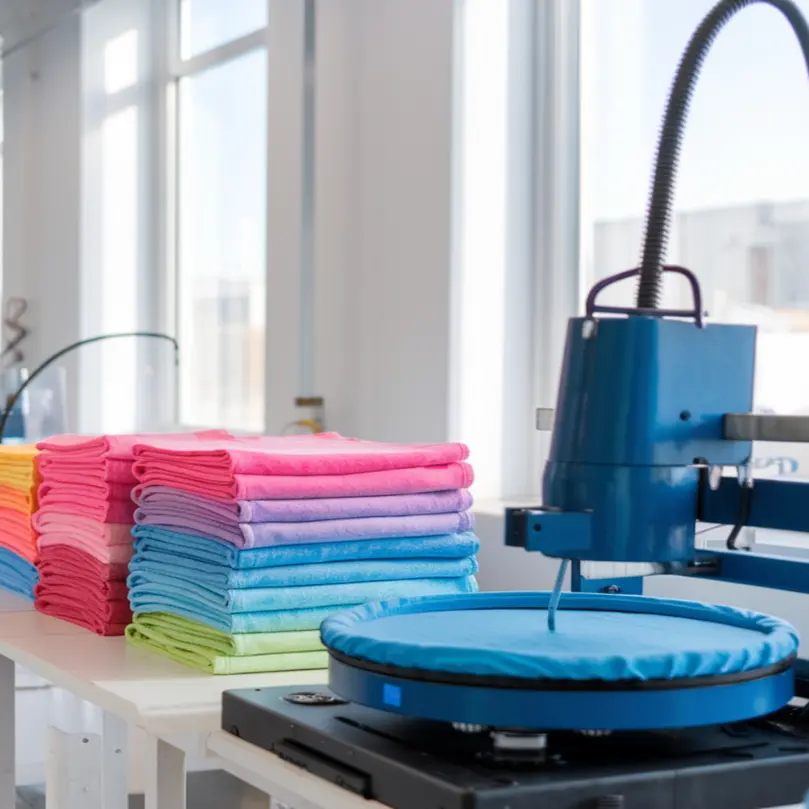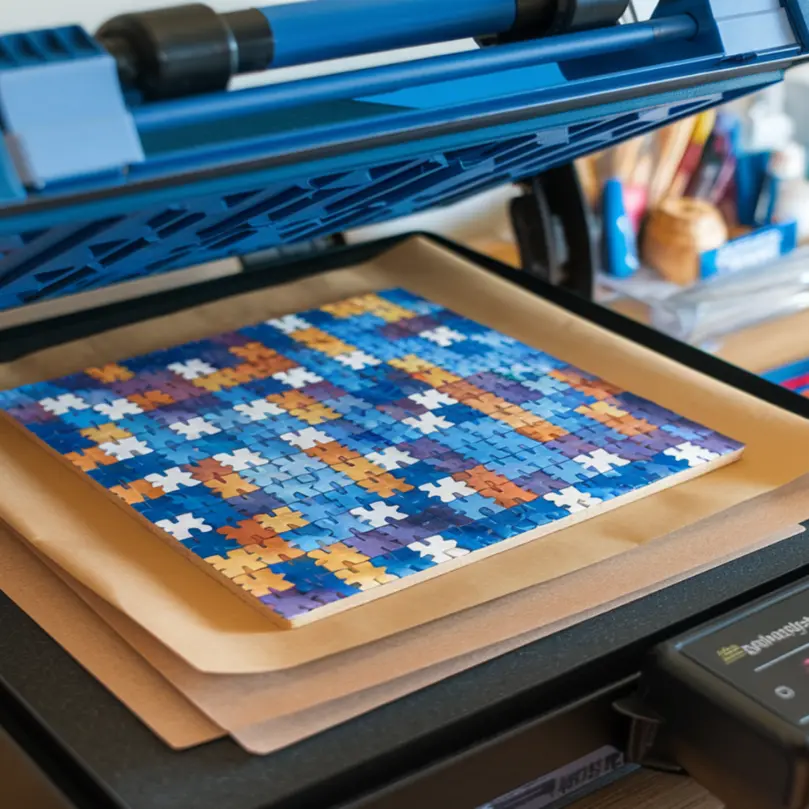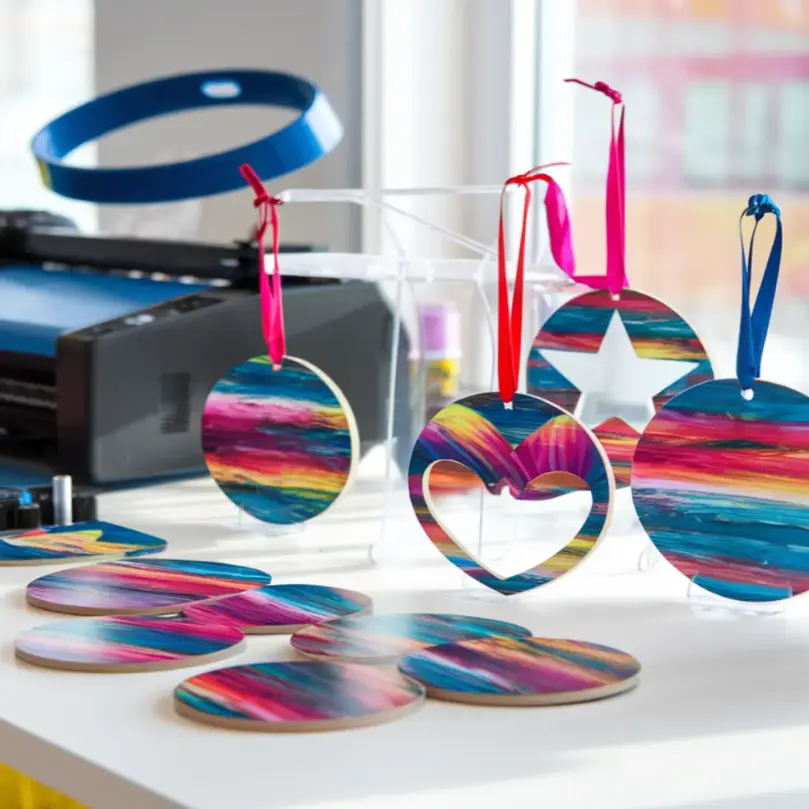Table of Contents
ToggleSelecting the right sublimation printer for your business is crucial for success. It is essential to conduct in-depth research on each printer prior to making a selection. In this article, we step in and attempt to provide some insights into two models of Mimaki sublimation printers. Mimaki sublimation printer offers a blend of precision, efficiency, and adaptability to fit diverse needs and budgets. This guide dives into specific models, detailing their strengths and limitations for startups, value-seekers, and high-volume producers.
Unveiling the Top Mimaki Sublimation Printers
In the dynamic field of dye sublimation, choosing a reliable printer is paramount. Mimaki sublimation printers stand out with their ability to effortlessly marry speed with quality. Catering to a plethora of applications, from fashion apparel to soft signage, these printers are designed to meet an array of industry demands. Advanced features such as the Mimaki Advanced Pass System and the Nozzle Check Unit ensure that each print is a masterpiece of vivid colors and sharp details.
Here are some of the best Mimaki sublimation printers for different needs:
- Best for Start-Ups: Mimaki TS100-1600 Sublimation Printer – read reviews here
- Best for High-Volume Production: Mimaki TS330-1600 Sublimation Transfer Inkjet Printer
Choose the printer that suits your requirements and take your dye sublimation printing to the next level with high-quality dye sublimation ink.
Best for Start-Ups: Mimaki TS100-1600 Sublimation Printer

Start-ups eager to delve into the world of sublimation printing will find a perfect ally in the Mimaki TS100-1600 sublimation printer. Its features include:
- Entry-level pricing
- Professional-grade capabilities
- Cost-effective solution
- High-quality output
Start-up businesses can confidently embark on their printing ventures, knowing that their equipment is built to grow with them.
Pros:
- Entry-level price with professional-grade results
- Scales production from small to large without immediate upgrade needs
- Advanced automatic features like Nozzle Check Unit and Nozzle Recovery System
Cons:
- Limited production scale compared to high-end models
- Manual interventions may be needed for complex tasks
I perceive the Mimaki TS100-1600 as an opportunity beacon for those embarking on their sublimation journey. Its affordability paired with professional output makes it an attractive choice for entrepreneurs. However, as production demands increase, the limitations of this entry-level model may prompt considerations for future investments. This balance of immediate accessibility and potential for growth warrants a thoughtful approach when selecting this printer as your start-up companion.
Pros of Mimaki TS100-1600 Sublimation Printer
The TS100-1600 printer offers a user-friendly experience with its advanced automatic features, including an uninterrupted ink supply system, and user-friendly RIP software. Some of these features include:
- Nozzle Check Unit (NCU) and Nozzle Recovery System (NRS) for easy maintenance and troubleshooting
- Dot position and feed correction for reduced manual efforts
- Dot Adjustment System (DAS) for consistent print quality and repeatability
These features contribute to a positive user experience and make the printer easier to use, especially for new users. The reliability of the printer is also confirmed by its ability to ensure consistent quality and repeatability in print results.
The energy efficiency of the TS100-1600, underscored by its Energy Star certification, is particularly attractive for startups mindful of operating costs. Its affordability and suitability for various production sizes make it a reliable choice for newcomers to the sublimation market. The printer consistently produces detailed and high-quality graphics, utilizing technologies like variable dot imaging and MAPS4, which are critical for startups looking to establish a reputation for quality.
Cons of Mimaki TS100-1600 Sublimation Printer
As an entry-level sublimation printer, the TS100-1600 has some limitations:
- It may not be suitable for large-scale production compared to higher-end models designed for larger enterprises.
- Despite its automatic Dot Adjustment System (DAS), manual intervention may be necessary for certain complex print tasks.
- Startups may need to invest time in learning how to use the printer effectively, especially if they don’t have extensive printing experience.
These factors should be considered when deciding whether the TS100-1600 is the right choice for your business.
Although the TS100-1600 is designed to scale with your business, an expanding production could eventually outpace its capabilities. It’s important for startups to recognize the potential need for future upgrades to accommodate increased demand and to plan accordingly in their business strategy.
Best for High-Volume Production: Mimaki TS330-1600 Sublimation Transfer Inkjet Printer

The Mimaki TS330-1600 sublimation transfer inkjet printer stands tall for those in need of a high-volume production powerhouse. With a maximum print speed of 1,453 square feet per hour and a maximum media width of 63.4 inches, it is a colossus in the industrial sublimation market. Versatile in its capabilities, it can produce textiles, signage, and even hard surface items, making it an indispensable tool for businesses with large-scale production needs.
Pros:
- Exceptionally high productivity with print speeds up to 69 m²/h in Draft mode
- Variety of ink types and configurations for long printing cycles
- Handles substantial media rolls for continuous printing
Cons:
- May be overkill for smaller-scale production needs
- Initial investment and space requirements may be considerable
Undeniably, the Mimaki TS330-1600 excels in high-volume production based on my assessment. Its ability to print at high resolutions and support for heavy media rolls make it a workhorse for industrial applications. However, for those with modest production requirements, the investment in such a printer may not be justifiable. It is crucial to consider both the current and future needs of your business before opting for a printing solution of this caliber.
Pros of Mimaki TS330-1600
The TS330-1600 printer is lauded for its high productivity, capable of reaching speeds of 69 m²/h in Draft mode, which is ideal for high-volume printing tasks. It offers the following features:
- Availability of various ink types, such as Sb411 and Sb410
- Option to accommodate a 2L ink pack or a 10 kg ink tank, ensuring long printing cycles without frequent ink replacements
- Ability to handle media rolls up to 45 kg in weight and 250 mm in diameter, supporting large material volumes for continuous printing.
High-quality output is a given with resolutions of 300dpi, 600dpi, 900dpi, and 1200dpi, catering to different levels of detail and print quality requirements. The system’s usability is enhanced by features like ‘V-shape cutting’ that simplify media installation, making the TS330-1600 a user-friendly option for businesses that demand high productivity and versatility.
Cons of Mimaki TS330-1600
The potential cons of the TS330-1600 for certain businesses include:
- The advanced features and high productivity may not align with smaller-scale needs.
- The initial investment for an industrial-grade printer can be significant.
- It requires a dedicated space due to its size and weight.
Additionally, the benefits of high productivity must be weighed against the demands of maintenance and potential downtime. While the printer is designed to minimize these issues, it’s essential to consider the implications of integrating such a robust machine into your workflow, especially if your production volumes don’t necessitate such advanced capabilities.
Navigating Your Purchase: Choosing the Right Mimaki Printer

Searching for the perfect sublimation printer can be an intimidating task. With various models offering a spectrum of features, it’s crucial to identify which Mimaki printer aligns with your business’s specific needs. Considerations such as the printer’s compatibility with different materials, its size and weight, and how it integrates with your existing workflow are all pivotal in your decision-making process.
The usability and versatility of Mimaki printers are enhanced by software like TxLink4 and RasterLink6, and features such as Mimaki Remote Access (MRA) add convenience and flexibility. Matching your printer to your intended printing materials and production volume will ensure that your investment pays off in efficiency and quality.
Understanding Sublimation Printer Specifications
The specifications of a sublimation printer are fundamental in achieving the print quality you desire. High print resolution is pivotal for producing vivid, detailed designs, especially for products that will be closely inspected. Mimaki printers, which can print at resolutions of 360, 600, 720, or 900 dpi, offer the flexibility to balance speed and detail based on different project requirements.
Advanced technologies integrated into Mimaki’s printing systems, such as Variable Dot Technology, Mimaki Advanced Pass System, and Waveform Control, provide maximum control and versatility in print output. These specifications are critical for businesses aiming to produce high-quality prints that stand out in a competitive market.
Matching Printer to Production Needs
Choosing a printer that matches projected production volumes is vital to prevent the hassle of premature replacements or upgrades. The Mimaki TS100-1600, for instance, is revered among startup users for its high-speed printing capability, which supports businesses ready to rapidly scale up their production. With Mimaki’s range of printers offering various ink configurations, such as 4-, 6-, and 8-color options, businesses can effectively meet their specific color production needs.
When considering a printer, it’s not just about the capabilities it has today but also about the potential it holds for tomorrow. A printer that automatically monitors printhead performance, ensures consistent quality, and avoids unnecessary downtime will be a valuable asset as your business grows. Remember, a printer that can grow with your business is a wise investment.
Summary
Throughout this guide, we’ve traversed the landscape of Mimaki sublimation printers, from models ideal for start-ups to those perfect for high-volume production. We’ve dissected the pros and cons, shared personal experiences, and provided insights into the specifications and features that matter most. It’s clear that whether you’re just starting out or looking to ramp up production, there’s a Mimaki printer that fits the bill.
In summary, the Mimaki TS100-1600 stands out as a versatile and cost-effective choice for start-ups and businesses looking for value for money. For those with higher production demands, the Mimaki TS330-1600 offers unparalleled speed and efficiency. As you navigate your purchase, consider the specifications and production needs carefully to choose a printer that not only meets your current demands but also supports your future growth.
Frequently Asked Questions
What is the best type of printer for sublimation?
The best type of printer for sublimation is the Brother Sublimation Printer, as it is reliable and affordable, making it a great choice for sublimation printing needs.
What is Mimaki printing?
Mimaki printing refers to the innovative 3D printing technology offered by Mimaki, which utilizes over two decades of experience in full-color inkjet engineering and manufacturing. It provides additive manufacturing solutions for various requirements.
What printer can you convert to a sublimation printer?
You can convert Epson printers such as the Ecotank ET-2800, ET-2850, ET-2760, ET-3760, and ET-15000 into sublimation printers, which are regarded as some of the best options for sublimation printing.
What is the best machine for sublimation printing?
The best machine for sublimation printing is the Epson SureColor SC-F100 (F170), known for its cost-efficiency and quality results. It’s a great choice for beginners as well as for large-scale printing.
What makes Mimaki sublimation printers suitable for various industries?
Mimaki sublimation printers are well-suited for various industries due to their versatility in printing on different materials and their advanced features that ensure quality prints.














